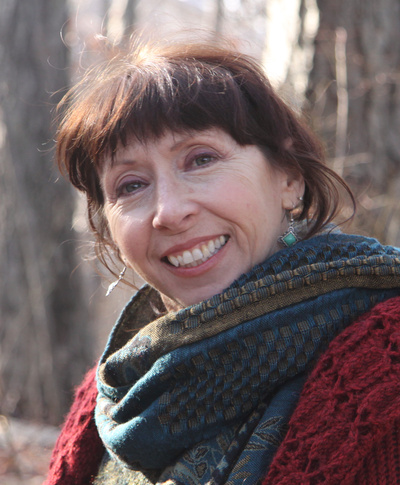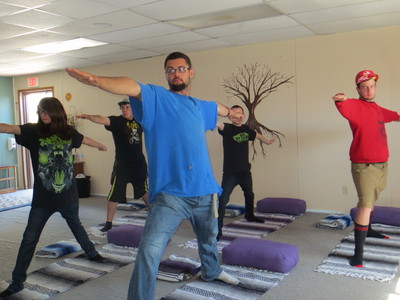 This is an interview with Francie Winters, coordinator of Environmental Strategies at the Nye and Esmeralda Counties Coalition (NyECC) in Pahrump, Nevada. Francie began teaching 'mindfulness' to at-risk youth in Las Vegas in the 1990s. In 2004 she and her husband moved to Pahrump, a small, rural town in the foothills of the Sierra Nevadas. At NyECC Francie teaches classes for at-risk youth and young adults, seniors/adults attending wellness/prevention classes, and staff.
This is an interview with Francie Winters, coordinator of Environmental Strategies at the Nye and Esmeralda Counties Coalition (NyECC) in Pahrump, Nevada. Francie began teaching 'mindfulness' to at-risk youth in Las Vegas in the 1990s. In 2004 she and her husband moved to Pahrump, a small, rural town in the foothills of the Sierra Nevadas. At NyECC Francie teaches classes for at-risk youth and young adults, seniors/adults attending wellness/prevention classes, and staff.
Rob: What originally motivated you to do this work, and what continues to motivate you? How, if at all, has that motivation changed over time?
It's making that difference in people's lives. I began working with at-risk youth with arts as the structure back in the 80s; it just morphed into teaching mindfulness and yoga. Life is challenging, and if we have tools that would help, it seems logical to share them. Yoga and mindfulness are not just recreational extras for these youth -- they're a lifeline.
Is there a standout moment from your work with NyECC?
A father in a treatment-sponsored class once shared that he felt good about how he was changing, but his family wasn't changing, and could we include significant others? I always remember that.
What did you know about the population you are working with before you began teaching? What were some of the assumptions you had about this population, and how have those assumptions changed?
I had personal experience of some of the same dysfunctions as I see in the people I teach, as well as work experience, and education. With at-risk youth there were fundamental concepts about how you approached life that I had to rethink. Consistency and honesty are really important. If you say you're going to be there, you need to be there. The majority of our students -- whether they are diagnosed with PTSD or substance abuse or not -- are out of touch with their bodies, and it takes regular encouragement for them to accept their own intuition and insights. Helping them find a place of empowerment and balance is more important than a perfect asana.
What are two distinct ways that your teaching style differs from the way you might teach in a studio, and what are the reasons for these differences?
 I wait patiently in meditation for my students to arrive, and don't make them feel bad if they come in late. I'd rather they came than not come. Because people are not making a financial commitment to attend, and commitment itself is often an issue, I always ask myself, "If this is the only time this person comes to a class, what is the one thing I can share that could help them in their life?" I don't have to worry about pleasing paying students to make the rent, and that means I can teach to a group just because of the need, regardless of their ability to pay me.
I wait patiently in meditation for my students to arrive, and don't make them feel bad if they come in late. I'd rather they came than not come. Because people are not making a financial commitment to attend, and commitment itself is often an issue, I always ask myself, "If this is the only time this person comes to a class, what is the one thing I can share that could help them in their life?" I don't have to worry about pleasing paying students to make the rent, and that means I can teach to a group just because of the need, regardless of their ability to pay me.
What has been the greatest challenge in your teaching experience, and what tools have you developed for addressing that challenge?
Funding and commitment. Even when they feel the benefits, it's hard for people to carve out time to take care of themselves. Probably the most consistent challenge for any teacher trying to work with under-served populations is having that underlying funding that enables them to do the work every week. Another challenge is finding money for further education. I read a lot, and take local workshops when I can.
What advice would you give to anyone who is going to teach in the population you work with?
Find a wonderful administrator who "gets it," and become part of the grant-writing process. This will help you set goals for your program that are achievable, that you understand, and that you know how to document when you do achieve them. Create a safe space. Empower your students with skills they can use to believe in themselves, and re-connect with the world.
Years of experience with grant work and teaching research-based life skills programs has given me an understanding of "best practices" that helped me focus my classes with particular populations. I took much of what I know for granted when I first started teaching, and it took a while to realize that not everybody has the same background. This makes a difference in how you approach teaching.
What are some of your ideas about, or hopes for, the future of "service yoga" in America in the next decade?
I see yoga continuing its momentum into the mainstream of wellness, prevention, and treatment, and I think we still have a lot of work to do. Even with model research-based programs, people in the grant world recognize that the teacher matters. A 200-hour certification program doesn't prepare someone to work with special populations. As more grants become available, those tasked with hiring teachers are going to need help with what to look for in a teacher, and where to find those teachers. How will we balance accessibility of education with quality, for the under-served?
How has this work changed your definition of service? Your definition of yoga? Your practice?
I'm enriched and honored by teaching. I accept my own body's natural aging process better and don't try to keep up with someone else's idea of an advanced yogi's asana abilities. I know the worth of my daily practice.
Editor: Alice Trembour
Stay connected with Give Back Yoga Foundation as we share the gift of yoga with the world, one person at a time, by following us on Facebook, Twitter and Google+ and by subscribing to our newsletter.
Are you a yoga instructor giving back to underserved populations? E-mail Executive Director Rob Schware if you're interested in being interviewed for this series.
